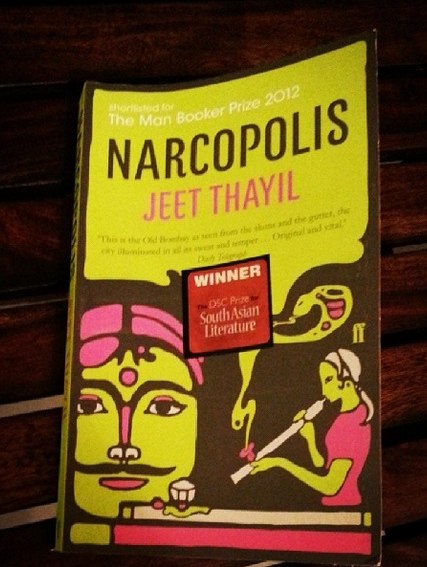Jeet Thayil
What a trip! Right from the single sentence prologue that lasts 7 pages which, to me, also gives a clue on how to consume this book – “Do I take a single continuous drag? You can, but then you have to recycle it inside your lungs, better to take short pulls, “How long should I hold it in?… it depends how much nasha you want” In essence, I could have read it in one shot and deconstructed it in my head, or I could consume it languorously and let the author take me through it at his own pace. I chose the latter, trying to keep up with his lucidity and fantasy. I honestly don’t know if I got it all right.
The narrator Dom leaves us soon after the book begins – to Rashid, the owner of an opium den, Dimple, the eunuch who is his ‘kaamvali’, and to a small extent Rumi. (no, just a shortened form of Ramesh) The networks of stories are like waves, probably matching opium induced undulations of the mind. They are continuous, and have similarities – of pain, and a need for belonging and love. But they are unique too, as we watch time pass by – backward and forward – through the perspectives of different characters. The Stoneman references give us an indication of the timeframe the novel is set, but we also get a glimpse of the socio-political scene of China in the 1940s thanks to Mr.Lee.
At 292 pages, this book is almost like the TARDIS, it’s much bigger on the inside, and that’s difficult to understand until you have read it. At some level, it also shows how, even with the openness that opium grants, the human mind, its complexities, and the choices it makes, are near unfathomable.
I thought the narrative pace reflected the change in the nature of the popular drugs of the day as well as the society that consumes it. This is best brought out by the last section which also has the brilliantly titled first chapter “A large accumulation of small defeats” as a summation of Bombay. Yes, we finally get to what is (and though it sounds like a cliche, this one does deserve it) one of the main characters – Bombay. Not the regularly captured flashy metropolis or the equally regularly caricatured underbelly, but an experienced man’s take on the world inhabited by pimps, prostitutes, drugs and sexual deviance. Yes, Shuklaji Street could have technically been anywhere, but I think there’s a combination of events, culture and characters that make this a Bombay phenomenon – a mix that creates and lives its own addiction. “Bombay, which obliterated its own history by changing its name and surgically altering its face, is the hero or heroin of this story…” Read on.


Leave a Reply